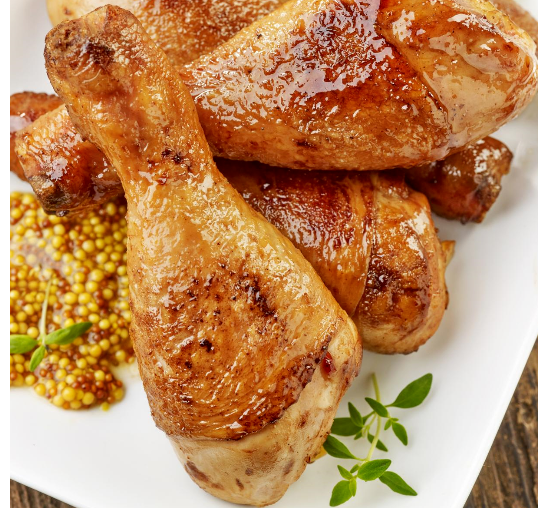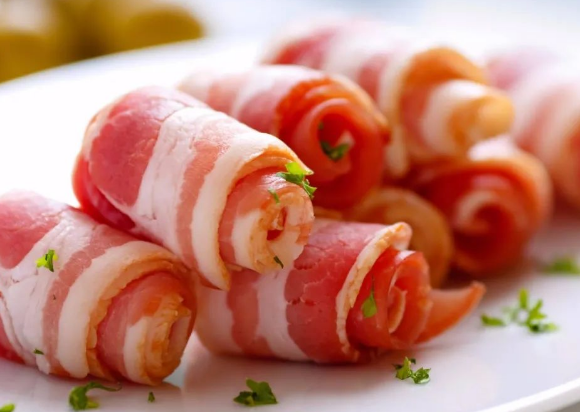Factors affecting the quality and yield of meat products Tumbler
1、The principle of rolling meat
Rolling and kneading is a method to speed up the marinating speed. It is a physical process of energy conversion in the meat block. The mechanical treatment of the meat block by rolling and kneading promotes the distribution of the liquid medium (brine) and improves the tenderness of the meat. The extraction of salt-soluble protein and the movement to the surface of the meat block are improved, so that the product yield and product quality have been greatly improved.
2、The role and purpose of tumbling
(1)Accelerate the penetration and color development of the pickling solution: The horizontal tumbler uses the principle of physical impact to drop the cured meat and rub the meat tissue, so that the tissue structure of the meat is damaged, the meat quality is relaxed and the fibers are broken, so the penetration speed is greatly improved. It can also make the injected marinating liquid evenly distributed in the meat, so as to absorb a large amount of brine, which not only shortens the marinating period, but also improves the yield and the tenderness of the product.
(2)Extraction of protein: During rolling, due to the friction, impact and extrusion between the meat pieces, the salt-soluble proteins are precipitated from the cells, and they absorb moisture, starch and other components to form a sticky substance, so that different meat pieces can be glued together. , can improve the effect of adhesion.

Pickled
1. Concept
Since ancient times, meat curing is a preservative storage method of meat, but today the purpose of curing has developed from simple preservative preservation to improve flavor and color, to improve the quality of meat. Salt or salt based, and add sodium nitrate (or potassium), sucrose and spices and other curing materials to treat meat process for curing. Through curing salt or sugar into meat tissue, reduce their water activity, improve their osmotic pressure, so as to selectively control the activities of microorganisms, inhibit the growth of rotten bacteria, so as to prevent meat spoilage.
2. Purpose
Preservative preservation; Stabilize meat color; Improve meat water retention; Improve meat flavor; Promote taste, elasticity and slice consistency.
3. Methods
(1) Dry Cure
Dry salting method is to rub salt or mixed salt on the surface of meat, and then layer piled on the curing rack or layer installed in the curing container, relying on the extravasation of juice to form salt solution for curing method. Under the action of the osmotic pressure and hygroscopicity of salt, the tissue fluid of the meat seeps out and dissolves in it to form a salt solution, but the formation of salt water is slow, the penetration of salt into the meat is slow, and the pickling time is long, so this is the A slow pickling method. But pickles have a unique flavor and texture. After dry curing, the weight of the product is reduced and a certain amount of nutrients (15%~20%) are lost. The weight loss depends on the degree of dehydration, the size of the meat, etc. The leaner the raw meat and the higher the temperature, the greater the weight loss. Due to the long curing time, especially for bone-in hams, the microorganisms contaminated on the surface can easily enter the deep muscles along the bones, and the speed of the salt entering the deep layers is slow, which can easily cause the internal deterioration of the meat. The advantage of using the dry curing method is that it is simple and easy to implement, and it is shelf-stable. The disadvantage is that the saltiness is uneven, labor-intensive, and the weight and nutrients of the product are reduced a lot.
(2) Pickle Cure
The meat is soaked in a pre-prepared marinating solution, and through diffusion and moisture transfer, the marinade can penetrate into the meat and obtain a relatively uniform distribution. It is often used for marinating cut meat, rib meat, etc. The salt concentration is very high during wet pickling. When the meat is pickled, the salt solution first penetrates into the meat and the water diffuses outward. The diffusion speed depends on the temperature and concentration of the salt solution. The diffusivity of high-concentration hot salt solution is greater than that of low-concentration cold salt solution. Nitrates also diffuse into the meat, but at a slower rate than table salt. Soluble substances in lean meat gradually diffuse into the salt solution, including soluble proteins and various inorganic salts. In order to reduce the loss of nutrients and flavor, it can be marinated in old brine. That is to say, add salt and nitrate to the old brine, adjust the concentration and then use it to marinate fresh meat. Every time the meat is cured, protein and other substances always diffuse out, and finally the concentration in the old brine increases, so repeat the application again. When cured meat loses much less protein and other substances than with fresh brine. As the brine gets older, there will be various changes and microbial growth. The sugar liquid and water provide a suitable environment for the growth of yeast, which can cause the brine to thicken and produce odors in the product. The disadvantage of wet pickling is that the color and flavor of its products are not as good as those of dry pickled products, the pickling time is long, the protein is lost (0.8%~0.9%), and it is not suitable for preservation due to high water content.
(3) Cure Injection
In order to speed up the penetration of salt and prevent the spoilage of cured meat, the brine injection method is widely used at present. This is because the mechanical injection not only increases the yield, but also disperses the saline evenly. After rolling and kneading, the muscle tissue is softened, and a large amount of salt-soluble protein is exuded, which improves the tenderness of the product, increases the water retention, color, and level of the product. , texture, etc. have been greatly improved, the yield has also been greatly improved, and at the same time, the pickling cycle has been greatly shortened.The advantages of saline injection are: the addition amount of various additives can be calculated in advance; products with more uniform distribution of additives can be produced; a variety of additives can be used; the yield of products can be improved; and manpower can be saved. The current saline injection is done through dozens or even hundreds of regularly arranged injection needles. There are two types of injection machines: low-pressure injection (injection pressure of 3-5BAR) and high-pressure injection (10-12BAR). Low-pressure injection is used, and high-yield and multi-fill products are used for high-pressure injection. Products made by high-pressure injection machines cannot be successfully injected with low-pressure injection machines, and products made by low-pressure injection machines cannot be made by high-pressure injection machines.
(4) mixed pickling
This is a curing method that utilizes the complement of dry and wet curing. For meat marinating, it can be dry-cured first and then placed in a container with brine. The injection pickling method is also often combined with dry or wet pickling. This is also a mixed pickling method, that is, after the salt solution is injected into the fresh meat, the salt is rubbed in layers, then stacked, or put into a container for wet pickling. But the brine concentration should be lower than that used for injection, so that the meat can absorb the water.
The combination of dry pickling and wet pickling can prevent the wet pickling method from reducing the concentration of the pickling liquid due to the extravasation of food water; at the same time, it does not promote dehydration on the surface of the food like dry pickling does; in addition, internal fermentation or spoilage can also be effective. Prevent.
No matter what kind of pickling method, it takes a certain amount of time to some extent. For this reason, first, a clean and hygienic environment is required. Second, it is necessary to keep low temperature (2~4℃), and the ambient temperature should not be lower than 2℃, because this will significantly delay the pickling speed. These two conditions cannot be ignored under any circumstances. When salting, stainless steel containers are generally used. Recently, more synthetic resins are used as salting containers.

bowl cutter
1. Principle principle
The whole muscle cell is wrapped in a layer of connective tissue membrane (ie, cell wall). As long as this layer of membrane is intact, actin and myosin can only maintain the moisture inside the tissue, not external moisture. During the process, the cell wall must be opened, so that the cytoplasm can be freed, and the fragments of the structural protein are freed, absorb water, and form a network-like protein colloid after swelling by water absorption. This protein colloid also absorbs fat granules, and when heated, prevents the binding between fat granules, providing a guarantee for a stable structure.Therefore, it is very efficient to do the necessary dry chopping before adding water and ice. The chopping of muscle fibers is easier in dry conditions, and the chopping effect is particularly good. If all the cells can be chopped, and the dissociated structural cells can be chopped again, the effect will be better, but chopping and mixing will cause a rapid increase in the temperature of the meat, so dry chopping is limited, only for freezing Only meat can be chopped vigorously before adding water. Generally, 20%~35% fat by weight of meat filling can form a stable protein-water-fat mixture in the protein network formed by chopping. When the fat content is too high, the required protein network is stronger. This stable The mixture is difficult to form. Therefore, the reasonable content ratio of protein, water and fat must be fully considered when making products.
2. Effects
(1) Activation of meat protein: increase the water retention and yield of the meat filling, reduce the greasy feeling, and improve the tenderness.
(2) Improve the structural condition of the meat: make the lean meat and fat meat fully mix and combine firmly. Improve the elasticity of the product, and it is not easy to produce oil when baking.
(3) Destroy the connective tissue membrane, expand the protein molecules in the muscle, and increase the viscosity and water holding capacity of the raw meat filling.
